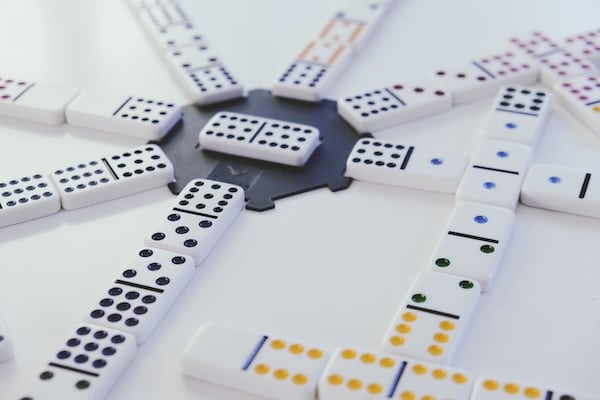Published on
Serious Games for Serious Learning

Games and simulations are two things that often get discussed in the same circles. Sometimes they even get misinterpreted for one another. Games and simulations do share some of the same characteristics; but they are different from one another.
This is particularly challenging when addressing adult learning and development. “Aren’t games for kids?” Yes, and no. Games are powerful tools that can be used for many different applications—teaching and learning for example.
When we address games and simulations, we should think of them both as “serious games.” Yes they’re games, but they’ve been designed for an educational purpose. Serious games were not created to be played for amusement or entertainment.
For most educators, serious games offer a distinct advantage compared to using commercially available entertainment games. When using commercial games, educators have to work to adapt them to help students learn. Serious games on the other hand are available for teaching and learning right out of the box.
They’ve allowed educators to improve teaching practices by using game structures, constructs and scaffolding directly for learning. Adult learning and development has also benefitted from these games, since they help students apply theories and concepts experientially.
The Difference Between “Games” and “Simulations”
Simulations can be games. Games like The Sims or Sim City even have simulation in the title. Simulations can also be serious games. Serious games are games that have been designed from the ground up for learning.
So, what are some examples of simulations? Microsoft Flight Simulator qualifies for its ability to accurately recreate how one would operate an aircraft. Cytosis is a serious game in its ability to teach players cell biology. Even chessis a serious game based on its ability to showinsights on how strategies might play out on a battlefield.
Simulations—unlike games—are supposed to be representative. They are supposed to be replications of what can be or has been. If you’ve ever seen Civil War re-enactors, played the Stock Market Game in your high school economics class, or participated in a case study, then you know what simulations can be used for.
Unlike games, simulations are also based on the recreation of a situation. Those can be historical or theoretical situations. All simulations require the player to problem solve and make decisions that one might make in the real world. Debate Club, Mock Trial Team and Model United Nations are all examples of how simulations have been applied for co-curricular learning. They’re often engaging forms of experiential learning because they provide a means for players to practice. Simulations give participants a safe means for them to play, experiment and experience what this would be like in a real-world situation. Flight simulators or historical reenactments provides a way for players to experience something that would be too costly, dangerous, or otherwise impossible.
What Makes A Serious Game?
A serious game is distinct from other types of games. Some serious games can be defined as simulations, models or even sports.
One of my favorite pieces of technology is my FitBit. This tiny device tracks steps, stair count, active minutes, and distance on a daily basis. While FitBit is not a game, it does include some game like elements. Those are points for tracking metrics, socialized leaderboards for competing against friends, and badges which modularize achievements.
But the platform, which focuses on health and wellbeing, is as serious game. Here, actions and activities serve an actual real-world impact. They help maintain health and activity when people would otherwise be inactive.
Leveraging Serious Games for Adult Learning and Development
This is often the most challenging hurdle, since most educators are not programmers, developers or designers. Instead, they focus on teaching, learning and instruction of their students. That means that making tools available for educators is one of the primary considerations for serious game developers.
If you’ve ever participated in a case study, then you’ve participated in a simulation—a serious game. Case studies have been used to help students apply theoretical concepts to real world situations.
Educators can go one step further and develop case studies which are pervasive simulations. Think about something like the Stock Market game from high school economics. This is a game that usually lasts for the entire term. Students engage with the simulation as novices at the beginning but grow in their capacity and competency over the course of the class. By the end, they are applying core learning outcomes to a simulated scenario.
Common Objections to the Introduction of Serious Games in an Adult Learning Engagement
Some of the most common objections to games are the seriousness of their application. Games are often seen at face value as vehicles exclusively for entertainment alone. There’s a strong disconnect between what games are capable of and what they are used for. When addressing serious games with faculty members, it’s important to identify how their teaching currently incorporates simulations or case studies. Those are the most ripe areas for game learning.
In addition, it’s useful to also include applicable and successful examples of serious games. This War of Mine does well in communicating the source material of the 1992–96 Siege of Sarajevo during the Bosnian War. While this was not the commercial game’s intent, it represents armed conflict from a less desirable but more educational perspective (civilian refugees). Challenging faculty and administrators to see the educational content and value of such a successful commercial title lends credence to a more game-like approach to adult learning.
By educating educators on games, simulations and serious games, we can best position these powerful aspects of experiential learning for student success.
Disclaimer: The views and opinions expressed in this article are those of the author and do not necessarily reflect the views of the affiliated institution.
Author Perspective: Educator



